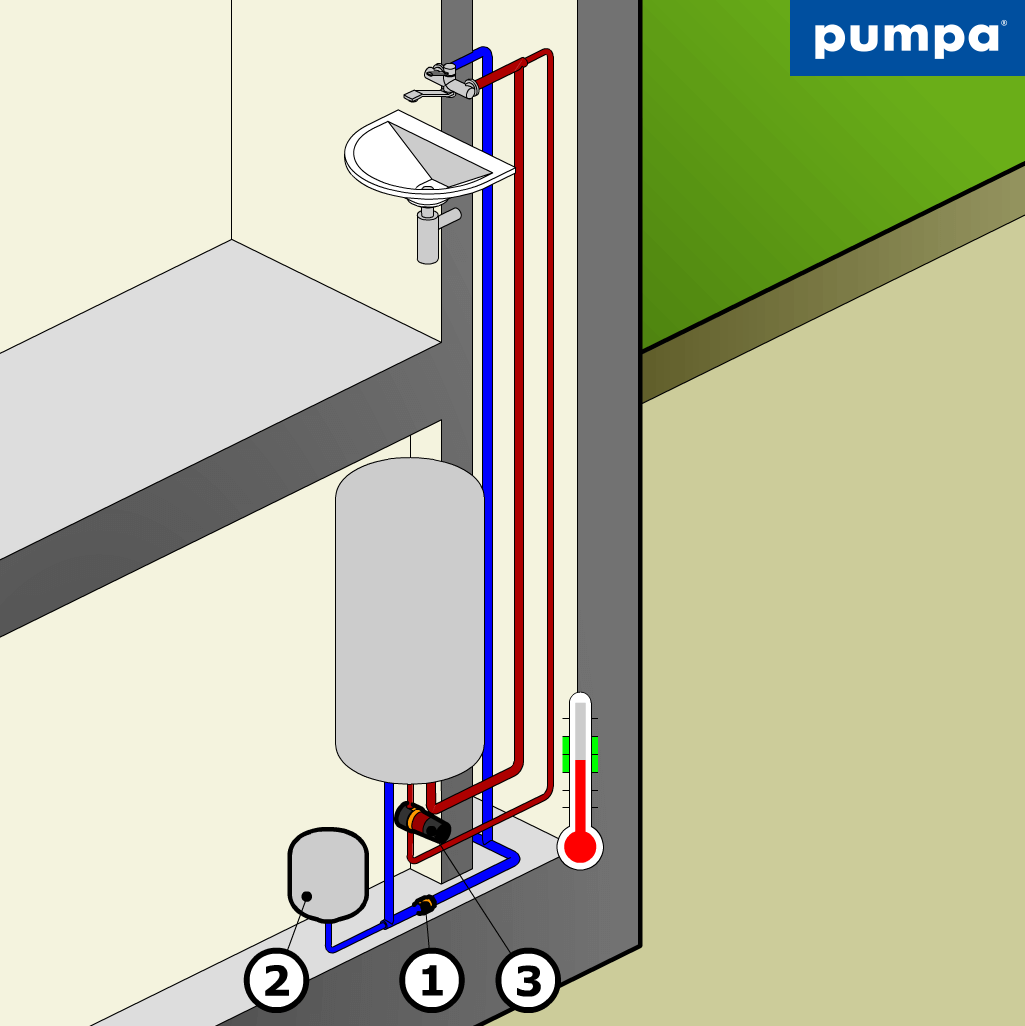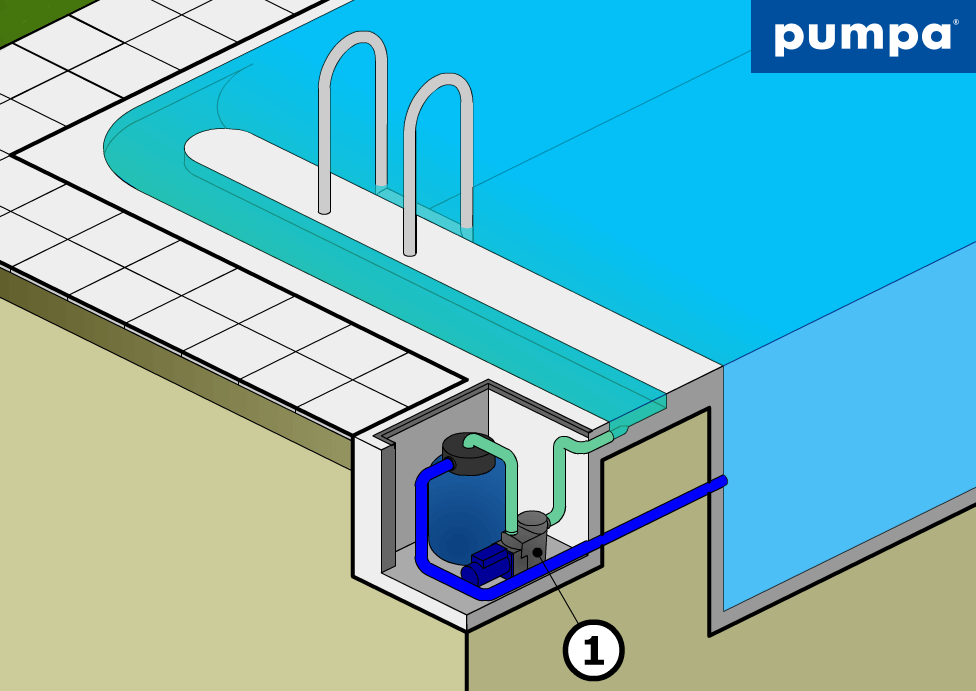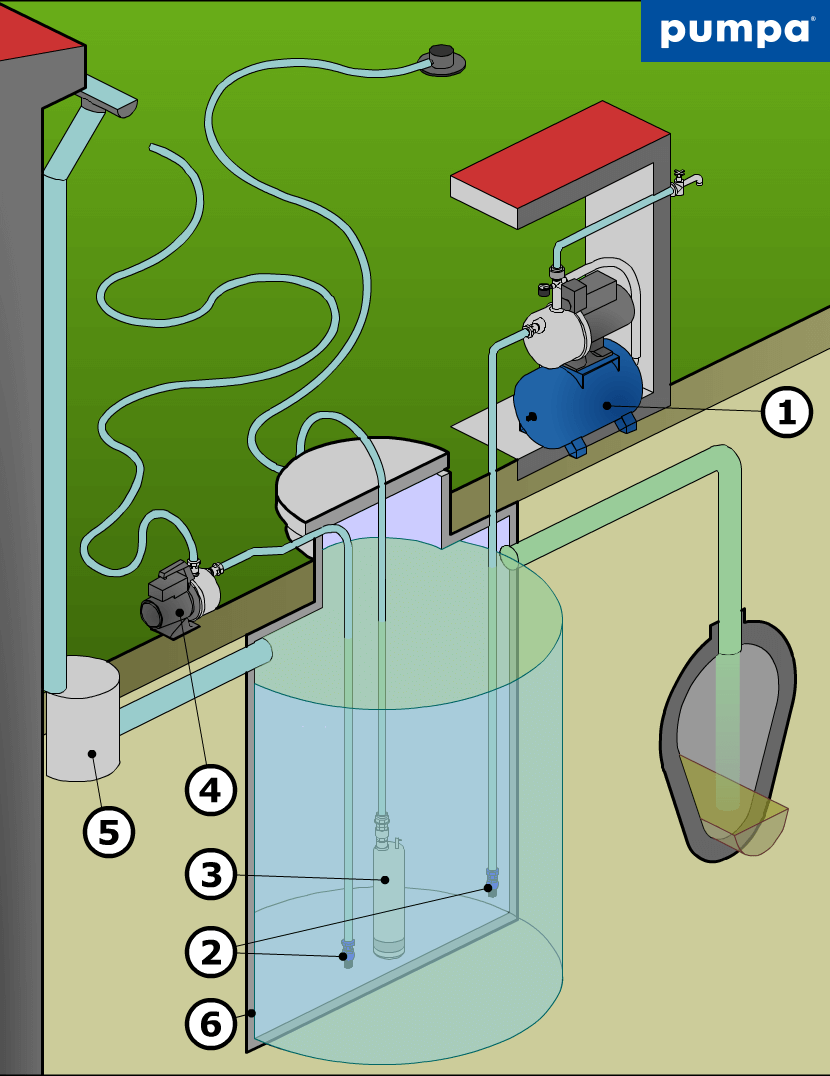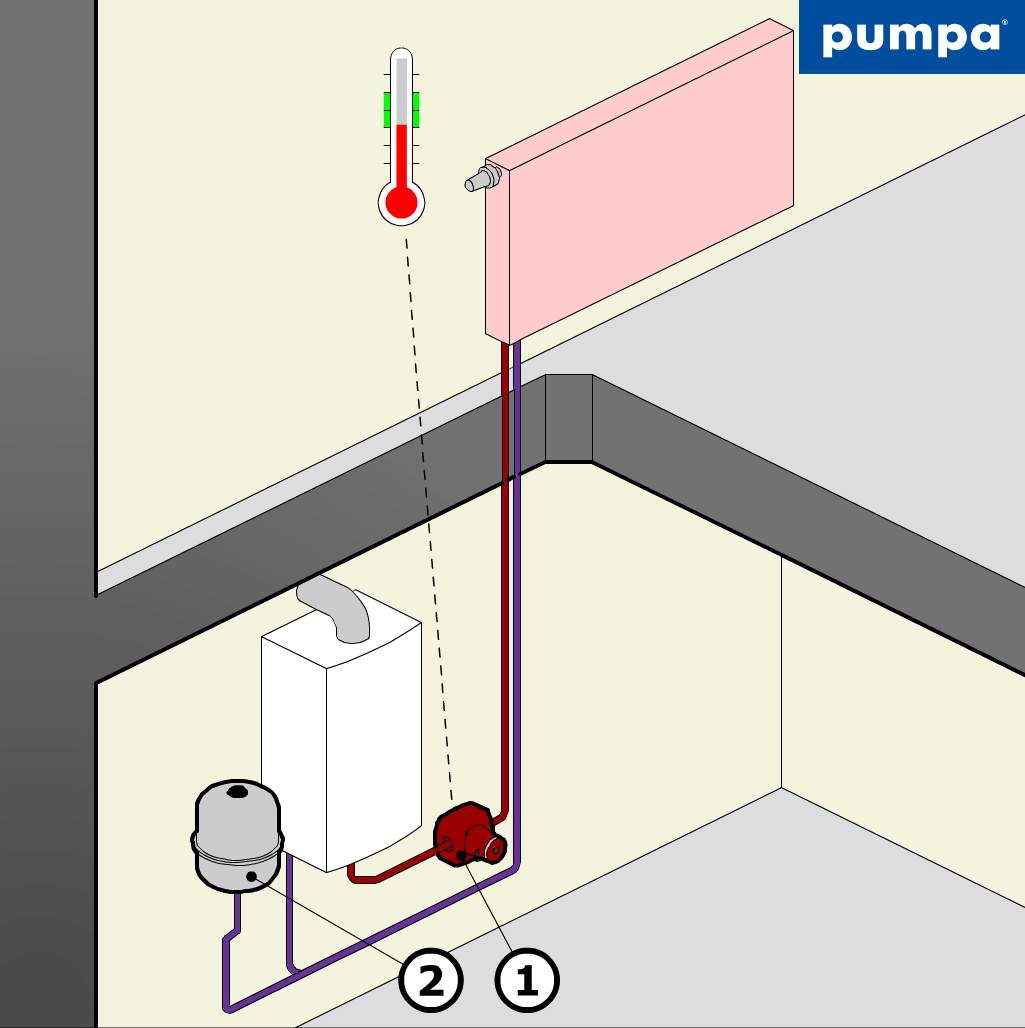Other pumping applications
Rain collector (retention tank for rainwater for utility purposes with overflow into the sewerage system using a pressure booster pump)
How the rain collector works
Rain collector - retention tank in the ground capturing rainwater for utility purposes with an overflow into the sewer system using a pressure booster pump.Principle
As the price of water increases, there is an increased demand for systems using rainwater for household and other applications. For this purpose, it is possible to use the components of the system to use the captured rainwater. The basis of the system is a retention water tank (6), into which rainwater is collected after pre-treatment in the dirt separator (5). The container is protected against overfilling with a safety overflow, that leads into the sewage. The storage tank can then be fitted with a pipe or hose with a suction basket and a swing check valve (2) for a complete pressure booster pump(1), or a portable pump (4). A submersible pump can also be installed in the tank (3). For trouble-free operation of the pumps, it is necessary to protect them against dry running (e.g. float switch, presscontrol, using submersible probes or you can buy compact automatic machines with integrated level monitoring and protection against dry running). These applications can also be combined according to the ways of rainwater usage.Circulator pump for heating
How the heating pump works
Principle
In most family houses, it is necessary to distribute the hot water from the boiler through a system using a circulator pump (1) for proper heating operation. In today's energy-intensive era, pumps with minimal power consumption, using a high-efficiency EC motor with a permanent magnet rotor, are particularly successful. The savings against unregulated pumps are 60% or more. To eliminate water expansion during changes in operating temperatures, expansion machines (2) are used for simple applications, or expansion automats for complex and large systems.Circulator pump for hot water
How the hot water pump works
Principle
For a comfortable supply of hot water from source to consumption, circulator pumps (3) are used to ensure the immediate flow of hot water without delay. Due to the composition of the heated water and the great susceptibility to deposition of lime and other incrusts, pumps made of brass are used, which have best resistance against these problems. Recently, a special expansion vessel (2) has been increasingly used, which has several favourable factors:
a) eliminates surges in the pipes when the outlet taps are suddenly opened and closed, thereby prolonging their life
b) captures the increase in the pressure of hot water during its heating at a time when there is no withdrawal and thus saves the swing check valve (1) and especially the safety valve, which would otherwise drain water from the system uselessly into the sewer.

Pool pump at the sand filter
How the swimming pool pump works
Principle
Sand filtration by the pool must be equipped with a swimming pool pump (1). This pump has a built-in pre-filter to catch leaves, hair and similar impurities that could damage it if sucked in. It has a motor isolated from pumped water and is made of high-quality plastics, resistant to corrosion and extortion by sand.



